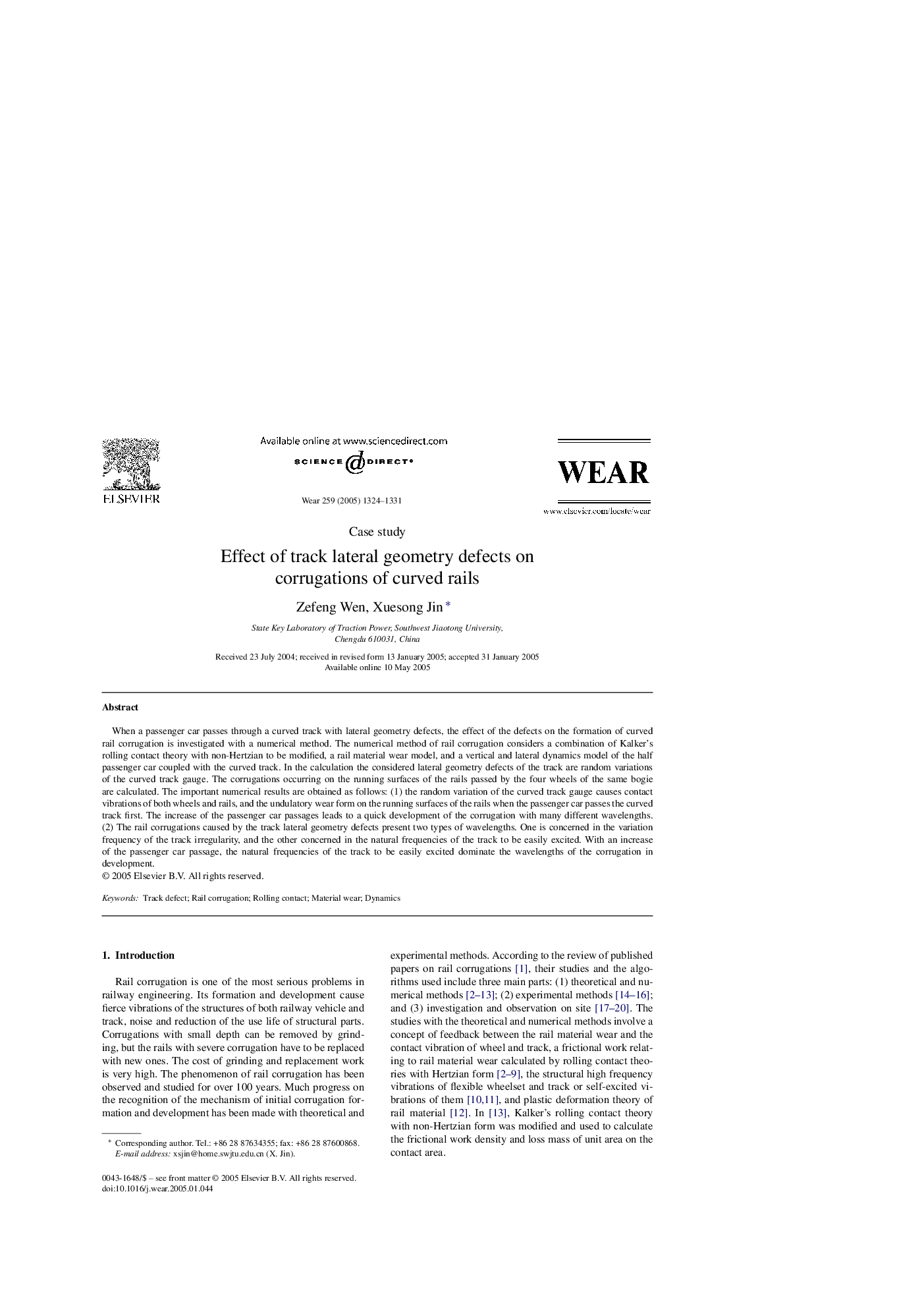| Article ID | Journal | Published Year | Pages | File Type |
|---|---|---|---|---|
| 9679357 | Wear | 2005 | 8 Pages |
Abstract
When a passenger car passes through a curved track with lateral geometry defects, the effect of the defects on the formation of curved rail corrugation is investigated with a numerical method. The numerical method of rail corrugation considers a combination of Kalker's rolling contact theory with non-Hertzian to be modified, a rail material wear model, and a vertical and lateral dynamics model of the half passenger car coupled with the curved track. In the calculation the considered lateral geometry defects of the track are random variations of the curved track gauge. The corrugations occurring on the running surfaces of the rails passed by the four wheels of the same bogie are calculated. The important numerical results are obtained as follows: (1) the random variation of the curved track gauge causes contact vibrations of both wheels and rails, and the undulatory wear form on the running surfaces of the rails when the passenger car passes the curved track first. The increase of the passenger car passages leads to a quick development of the corrugation with many different wavelengths. (2) The rail corrugations caused by the track lateral geometry defects present two types of wavelengths. One is concerned in the variation frequency of the track irregularity, and the other concerned in the natural frequencies of the track to be easily excited. With an increase of the passenger car passage, the natural frequencies of the track to be easily excited dominate the wavelengths of the corrugation in development.
Related Topics
Physical Sciences and Engineering
Chemical Engineering
Colloid and Surface Chemistry
Authors
Zefeng Wen, Xuesong Jin,
